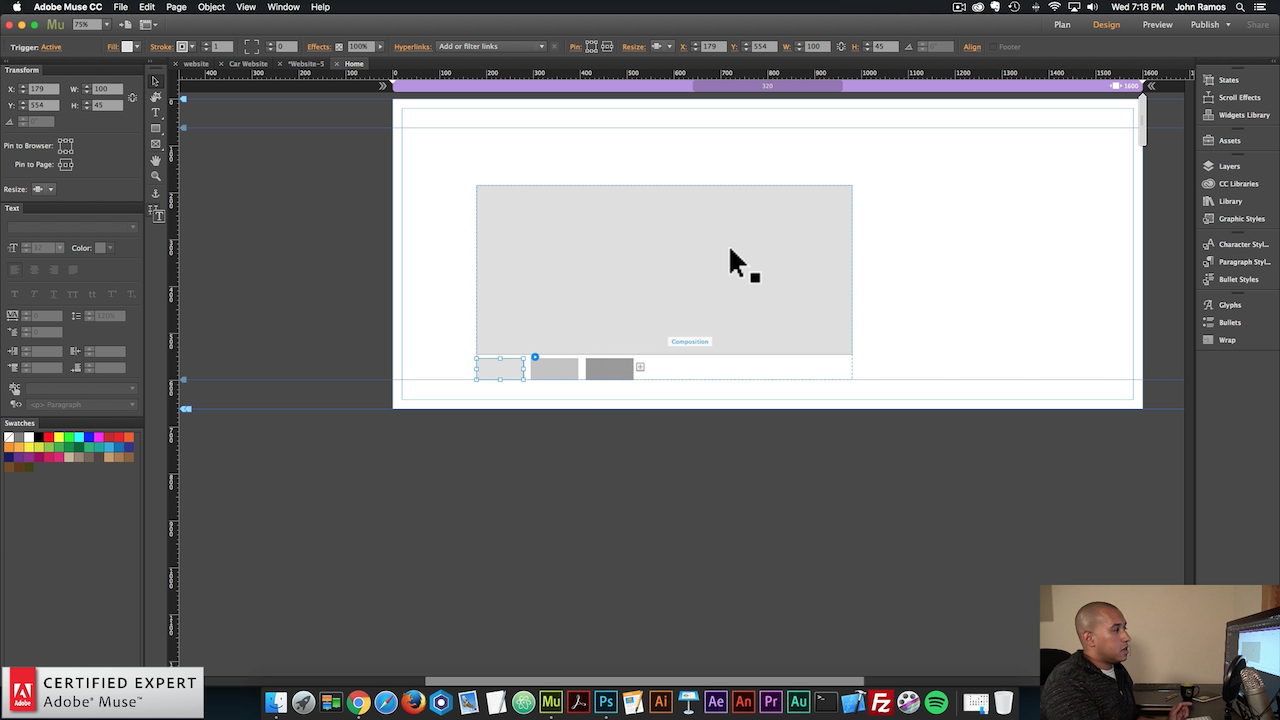

At the same time, they have much to offer to beginners, although, it may take some time to explore and master the systems.Īdobe Muse – is the downloadable website builder, which requires preliminary installation and mainly targets professional web designers. The platforms are used to start all types of business and personal web projects, being a worthy solution for web design pros. One other thing to note: keep the tag really, really small and away from other items whose positioning could accidentally be effected.Adobe Muse and Webflow are DIY website builders, which encompass convenience and utmost functionality, matching the needs of all user categories. Then you can simply turn them all off with one button. An easy setup would be to create a new layer for all labels. And also make sure to turn them all off before you publish. Make sure each identifying text is only visible in its proper breakpoint. I simply make a text box for each zone with the pixel width value of that zone.
#RESPONSIVE RESIZE MUSE FULL#
Instead, get used to using the keyboard commands for for page preview ( cmd+shift+E), and for full site preview ( cmd+alt+E).īy placing an identifier on the page of each breakpoint zone, you can identify which zone you need to make changes to. Of course, this is in the layout window so you will not see a real preview of many functions. Preview doesn't let you test responsiveness the only option is to use the Scrubber control, which is part of the breakpoint ensemble. Now let's take a look at some ways you can test your page to check your responsive designs are working as you intended. Or perhaps just removing an item altogether as the browser width narrows.įor more granular tips and insights, visit this page on Adobe's site (opens in new tab). Brute force techniques involve completely removing a page object that exists in one breakpoint zone (you can right-click to 'Hide in Breakpoint' or 'Hide in other Breakpoints'), and replacing it with a new item in another zone. Gentle use involves waiting until page elements begin to break, then creating a new breakpoint width where you fix that element. In any case, you probably want to try and have as few breakpoints in a project as you can.īut as a fail-safe, breakpoints can be used gently, or with brute force.

Granted, this would probably necessitate it being a rather simplistic site. Theoretically you could create a responsive site with only one full-width breakpoint and have all the elements scale automatically. In fact, ideally you would rely mostly on the responsive controls listed above, and only use breakpoints as a last-ditch solution, when other solutions won't work. Ideally, you would flow as smoothly as possible from one browser width to another. Granted, this is not the way you want to work. Each new breakpoint allows the designer to start with a fresh canvas, at least if needed. With all of Muse's responsive tools, the heavy hammer is of course the breakpoint controls.

My solution is to pin it to the centre, as seen here. I have noted that when changing the browser width, some items placed in the dead-centre go awry. In addition to a responsive text block width, if not pinned in one way or another, Muse will also responsively shift the horizontal placement of an item on the page. Instead, the headlines are perhaps best handled by relying on breakpoints. So while most body text can be set to Responsive Width, I'm less inclined to do that with the headlines without a lot of testing.

Generally speaking, we will always need more control over our headlines than over our body text. Though it is more labour intensive than choosing the Responsive Width option and letting things go. This just seems like a 'best of both worlds' way to work. So rather than setting a text box to be responsive, instead keep its width locked and modify it as needed in each of the various breakpoint zones you create.Įssentially, this is almost like treating each breakpoint as if it was a fixed page, like we have done with the desktop, tablet and mobile pages in previous versions of Muse. The thing to keep in mind is that we now have other toolsets to address these issues as well – for example, breakpoints. This sounds like a good thing, and it can be for many situations.īut for we control freaks, it adds yet another variable that might mess up our vision. Set a text box to 'Responsive Width' and Muse will change its width proportionally with that of the browser's width. Resize menus can be found via the controls above or by right-clicking


 0 kommentar(er)
0 kommentar(er)
